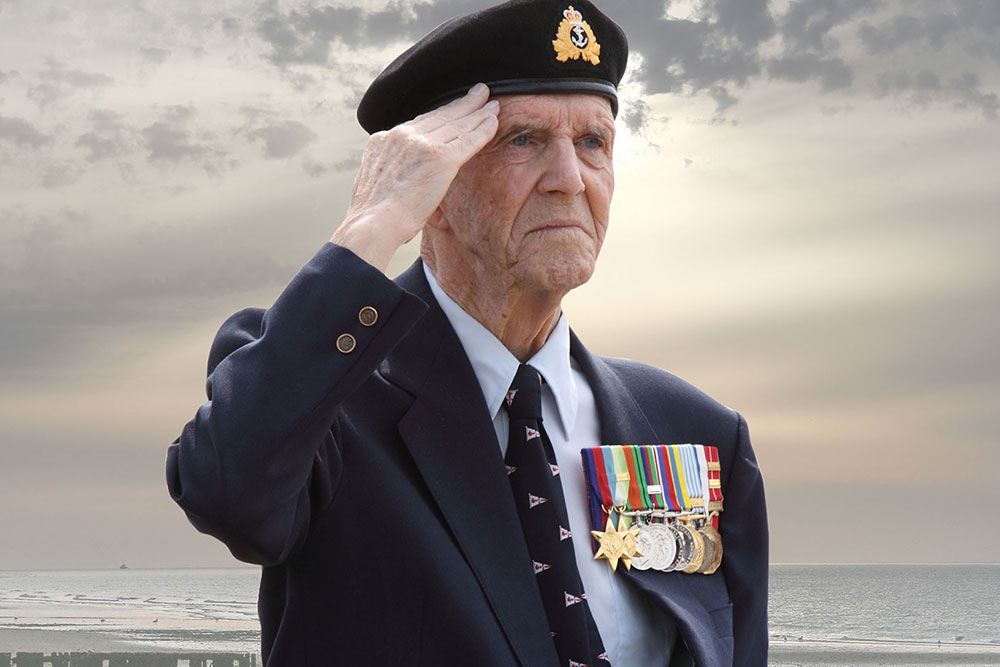Captain (N)(Ret’d) Harold (Hal) Richard Tilley, CD
“From the day he was born to the day he died he was a naval officer,” says Richard Tilley, son of Harold Tilley.

Veteran Harold Tilley’s service to Canada began at the age of 17 and lasted until the day he died. Born in New York City in 1923, Harold Richard Tilley received his second name from a naval officer, a family hero of the First World War. He spent his first summers in Canada swimming, canoeing and sailing. He then attended Lakefield College School in Ontario, and after earning the Governor General’s Medal for Academic Excellence, he decided in 1941 to join the Royal Canadian Navy. He was part of the last group of Canadians that was trained during the Second World War at the Royal Navy College, Dartmouth in Dartmouth, England.
Upon completion of eight months of shore training at the Royal Navy College, Midshipman Tilley went on to his sea training with the Royal Navy aboard HMS Anson. He was one of only a few Canadian officers aboard the battleship. After his time in HMS Anson, Midshipman, Tilley went on to do small-ship training in the hunt-class destroyer HMS Melbreak. He admitted his time in HMS Anson and HMS Melbreak lacked excitement, but that was about to change with the developments taking place in the Second World War.
On June 6, 1944, SLt Tilley was one of the 10,000 sailors who risked their lives as a part of Operation Overlord—more commonly known as D-Day. His unit’s landing on Juno Beach did not go as planned.
Midshipman Tilley was then sent back to the UK for his Sub-Lieutenants’ Technical Courses to be followed by leave. However, the allied forces were preparing for D-Day, and rather than going on leave SLt Tilley was appointed the navigation officer aboard LCI(L) 263 of the 2nd Canadian (262nd RN) Flotilla. He volunteered for the position despite not having any formal training on the vessel.
On June 6, 1944, SLt Tilley was one of the 10,000 sailors who risked their lives as a part of Operation Overlord—more commonly known as D-Day. His unit’s landing on Juno Beach did not go as planned. What was meant to be a quick drop off of troops and a trip back to England, ended up being a week on Juno Beach. His unit got two miles offshore before realizing the hull had sustained damages that were causing them to slowly sink, so they made the decision to turn back to the beach. While avoiding mines, booby traps and bombs from Focke-Wulfs, the crew were kept busy on the beach doing ship repairs, and acting as a prisoner of war camp and minor hospital.
That’s exactly how it looked. That was my D-Day.
Capt. (N) Tilley was aboard one of the few vessels that had an official photographer and said, when referring to the photos of D-Day on display in the War Museum in Ottawa, "That’s exactly how it looked. That was my D-Day." In a letter to his parents, Capt. (N) Tilley noted that the many German pillboxes along the beach were booby-trapped, and to avoid becoming a ‘booby’, he had to be very careful. This letter, along with several more of his D-Day artifacts, can be found at the RCN Museum of Halifax.
The Second World War was only the beginning of Capt (N) Tilley’s 39 years of service in the Royal Canadian Navy. After completing the war on the Murmansk Run aboard HMCS Huron, he served in many ships, including HMCS Nootka during the Korean War. He was the Commanding Officer of HMCS Jonquiere, HMCS Saguenay and the Seventh Escort Squadron, and Base Commander of CFB Cornwallis. Capt. (N) Tilley retired from the Navy in 1980, and continued his commitment to community service at St. Thomas the Apostle Church in Ottawa and as an active member of the Naval Association of Canada. As an avid philatelist, he enjoyed preparing presentations of naval history using his extensive collection of ship stamps.
In honor of the 75th anniversary of D-Day and the Battle of Normandy, Capt (N) Harold Tilley is featured on the official Veterans Affairs Canada poster. This poster is proudly displayed throughout Canada and Europe to highlight this important moment in our history.
- Date modified: